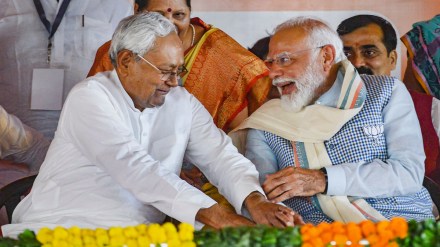By Badri Narayan, Vice Chancellor, Tata Institute of Social Sciences, Mumbai
The people of Bihar have given a clear mandate to the National Democratic Alliance (NDA). However, the landslide win cannot be explained fully if it is viewed from the lens of caste alone. Such a victory is delivered by factors that go beyond castes and communities.
Public emotion may be one such factor. A majority of Bihar’s voters betrayed a sympathy as an undercurrent which may not have been gauged by psephologists and political analysts. In the run-up to the polls, the sympathy wave was earned by incumbent Chief Minister Nitish Kumar as a result of the constant dismissal of his relevance or even physical ability to rule Bihar by the likes of Tejashwi Yadav from the Opposition alliance. Secondly, Kumar established a connect with women voters who decided against risking a change of guard and backed a leader who has empowered them. Their sense of identity, dignity, and confidence persuaded women voters to safeguard the current political regime. The developmental benefits also led sections of the people to vote for the NDA.
Broadly, the key factors driving the NDA’s electoral performance were crafting a cohesive social combination, development-based politics, and the trust values of the leaders and politics on Bihar which the winning alliance has evolved over the last couple of decades.
The rainbow social combine that the NDA stitched together in Bihar politics includes a sizeable population of Dalits. Among them are Mahadalits and the Dusadh that make up the largest proportion of the Dalit community. The rainbow coalition also includes extremely backward castes (EBCs), along with influential backward caste groups such as Kurmi and Koeri, and forward castes.
This social alliance is the largest such grouping, and is formidable in comparison with the one that was put together by the Indian National Developmental Inclusive Alliance. The Opposition alliance, also known as the Mahagathbandhan, has a social base revolving mostly around Muslims and Yadavs. The alliance did try to bring into its fold some EBC groups such as Mallah and Tanti, but the strategy did not work in its favour.
In my view, this election is also an example of one that mobilised beneficiaries to vote for the NDA. The number of beneficiaries of various social support and welfare schemes has steadily grown in the years of NDA rule, and this has contributed to a swelling voter base. For instance, the Pradhan Mantri Jan Dhan Yojana included more than three crore voters. On the other hand, the PM Ujjwala Yojana, the PM Garib Kalyan Yojana, and various pension schemes added several crore voters to the beneficiary fold. Notably, the mobilisation of beneficiaries extended across castes and communities who form a large percentage of the state’s population.
Besides forming the rainbow alliance and beneficiary mobilisation, a third critical factor behind Friday’s results is the women’s vote. Women in Bihar have been beneficiaries of central as well as state schemes. Janata Dal (United) or JD(U) leader Nitish Kumar, who has been Bihar’s longest-serving chief minister, has strived to empower them by introducing a number of women-centric development schemes over the years—from the Cycle-Poshak Yojana and reservation for women in panchayati raj institutions and the police, to liquor prohibition policy and dissemination of various direct bank transfer and health schemes. The recent Mahila Rojgar Yojana—popularly known as “Das Hazari Yojana” and under which `10,000 was distributed to women—was the latest addition to this list.
The fourth factor in this election was the trust value of Kumar and Prime Minister Narendra Modi. Through their work and political action, the duo has earned huge trust among the masses. Their trust value attracted voters, in addition to the sympathy wave for Kumar when he came under attack from the Opposition parties during the election campaigns.
On the other hand, a flawed electoral strategy by the Opposition also created confusion among voters, particularly regarding the question of their chief ministerial candidate. The Mahagathbandhan announced its CM face only weeks prior to the elections. Secondly, electoral concerns around the Election Commission’s special intensive revision that drew opposition over fears of disenfranchisement, and allegations of vote theft flagged by the Congress at a national level did not yield results.
The Opposition’s discourse on migration—debating a perceived damage resulting from natives migrating from Bihar to other states for work—betrayed a lack of understanding at the grassroots level. The results show that the voters did not buy the claims of vote theft but retained their faith in electoral institutions, as evidenced by the record turnout percentage.
Last but not the least, the manner in which the Bharatiya Janata Party (BJP), the JD(U), and their allies rallied together and focused on every booth contributed to the landslide victory. The BJP’s election in-charge for Bihar, Dharmendra Pradhan, and his team worked silently but effectively, carving out issues which resonated with the people. Pradhan kept a low profile despite shouldering a big responsibility, while the party’s star campaigners such as Modi, Amit Shah, Yogi Adityanath, and Mohan Yadav chipped in. PM Modi, in several rallies, communicated his vision of Viksit Bharat (developed India) to the audiences, while also reaching out to women, youths, and other sections of society. The results vindicated the success of the outreach and public faith in the NDA regime.
